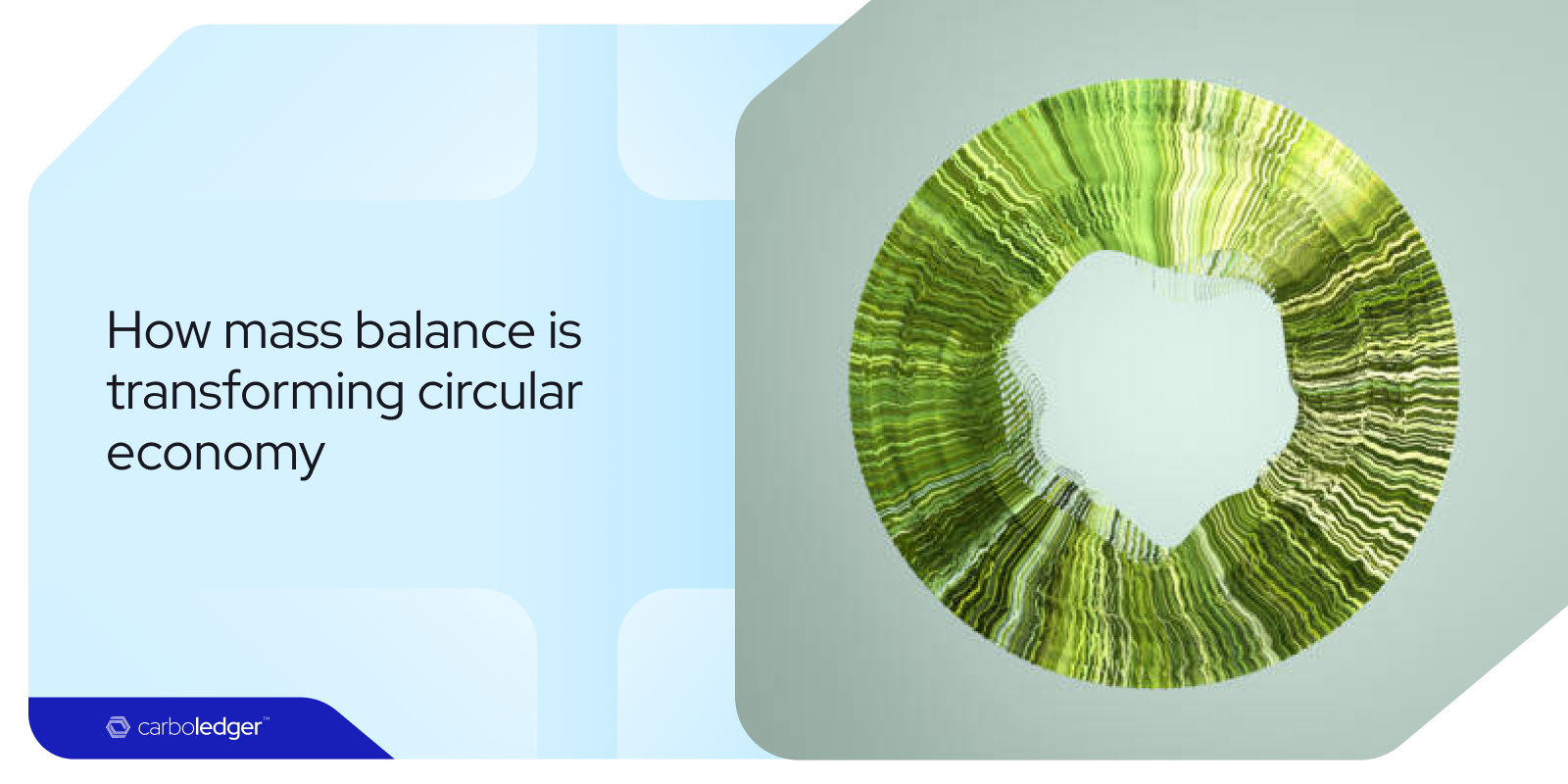Overcoming the Challenges of Supplier Data Collection
August 14, 2024
Discover how automating data sharing can improve accuracy, increase response rates, and free up time for strategic sustainability efforts.

With sustainability now recognized as a crucial aspect of the production process, the circular economy is rapidly gaining significant momentum. Mass balance is a cornerstone of this evolution, a robust method that enables industries to shift from the conventional linear model of “take, make, dispose” towards a more sustainable, circular approach.
This blog will delve into how mass balance is revolutionizing the circular economy, driving resource efficiency, and paving the path to a more eco-friendly future.
Mass balance is a method used to keep track of the flow of materials in a production process. It involves a thorough tracking of all inputs such as raw materials, and output, including finished products, by-products, and emissions to ensure that everything is accounted for. The basic principle is simple – the total mass entering a production system must equal the total mass exiting it, considering all forms of transformations.
Across all industries, this concept is rooted in the law of conservation of mass, a crucial element in monitoring and optimizing resources.
The circular economy is a sustainable approach that strives to reduce waste and maximize resource efficiency. In contrast to the traditional linear economy, where resources are used once and then discarded, the circular economy aims to “close the loop” by designing products and processes that eliminate waste, extend the lifecycle of products and materials, and restore the natural ecosystems.
Core principles include reusing, recycling, repairing, and remanufacturing, all of which help lessen the environmental footprint of production and consumption.
Mass balance plays a significant role in the circular economy by allowing industries to measure and monitor the flow of material more accurately. The mass balance approach not only enhances resource efficiency but also unveils the potential for reuse and recycling.
For example, the chemical industry has implemented a mass balance approach to include renewable feedstocks in its production. Carefully managing the share of renewable material inputs will help companies ensure their products contribute to a circular economy without compromising on quality and performance. This strategy allows a smooth transition from fossil fuels to renewable resources, bolstering the industry’s commitment to sustainability.
Fundamentally, mass balance is about tracking material flow within the production process. The approach includes meticulous accounting for all inputs – raw materials, energy, and other resources and outputs such as finished products, by-products, and emissions. By ensuring that the mass entering a system and exiting a system is eventually balanced, companies can get in-depth information and control over their resource usage.
For instance, in the chemical industry, manufacturers make use of a mass balance approach to monitor the usage of sustainable materials used in their products. This approach not only provides a cost-effective way to develop sustainable materials but also enhances customer relationships.
Boosting recycling and reusing through the mass balance method
Mass balance also plays a pivotal role in recycling waste into reusable materials. Accurately tracking waste streams and their composition can develop processes to recycle or repurpose these materials effectively. In the fashion industry, the mass balance method is used to track recycling of old and used garments and textiles and the new products are made from recycled fibers, aiming towards a sustainable and circular economy.
New tools and software are evolving with technological advancements that are helping in making tracking and managing material flow more efficient. Carboledger offers advanced mass balance calculations, providing excellent insight into resources besides modeling material flows across complex supply chains. These advanced tools help companies identify opportunities, and bolster their transition to a circular economy.
The perfect example of digitisation is an integration of advanced technologies which has revolutionized mass balance practices. The real-time data and enhanced transparency in the supply chain makes it easier to monitor and manage the material flows.
As the demand for sustainable practices increases, new technologies are emerging to automate mass balance bookkeeping that have the potential for wider adoption across various industries. Through the application of machine learning and AI, companies can better manage large volumes of data, anticipate material demands, and reduce costly errors, helping to achieve circular economy goals.
Mass balance is becoming increasingly vital in shaping the circular economy. With industries progressively adopting sustainable practices, the demand for accurate and efficient mass balance will intensify. The current scenario indicates that mass balance is evolving into a standard practice across diverse industries, propelled by technological advancements and increasing market demands.
For industries looking to advance in sustainability efforts, adopting mass balance practices is essential. This approach will enhance waste reduction, improved resource efficiency, and the achievement of circular economy goals.
One of the most significant methods, facilitating recycling and reusing, contributes to the circular economy. Closing the loop – from waste to resource is possible by monitoring material flows and identifying waste streams that can be converted into valuable resources. In the paper industry, mass balance is used to track the recycling process of paper fibers. Supervising the inputs of recycled paper fibers and the output of new paper products, industries can ensure that a significant portion of raw materials comes from recycled sources.
August 14, 2024
Discover how automating data sharing can improve accuracy, increase response rates, and free up time for strategic sustainability efforts.
July 6, 2024
Let’s understand the concept of mass balance and how it can help businesses develop sustainable solutions.
June 25, 2024
Learn how the IFRS-Greenhouse Gas Protocol partnership impacts the landscape of sustainability reporting.